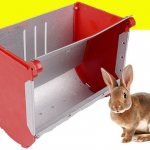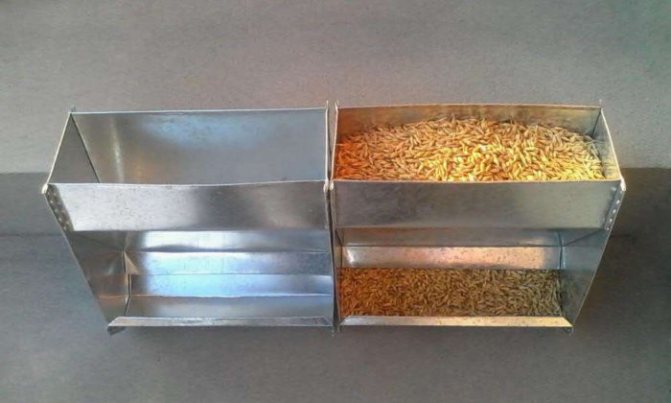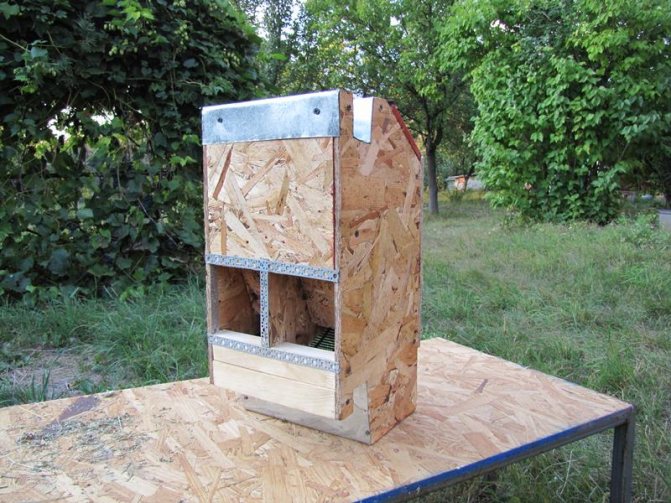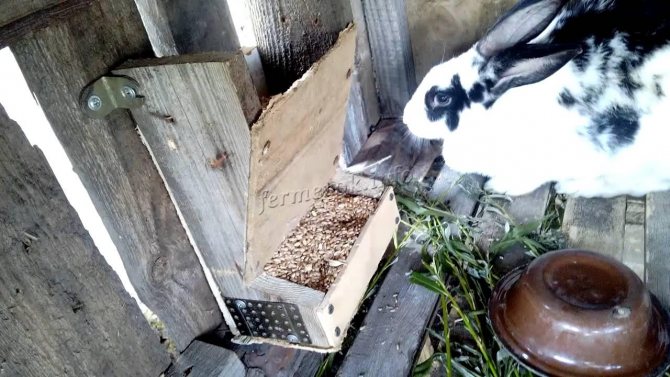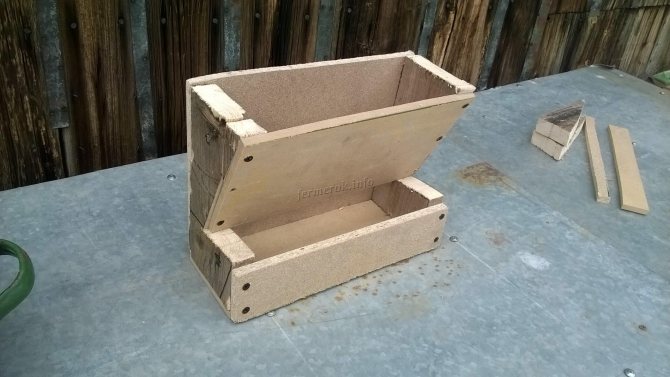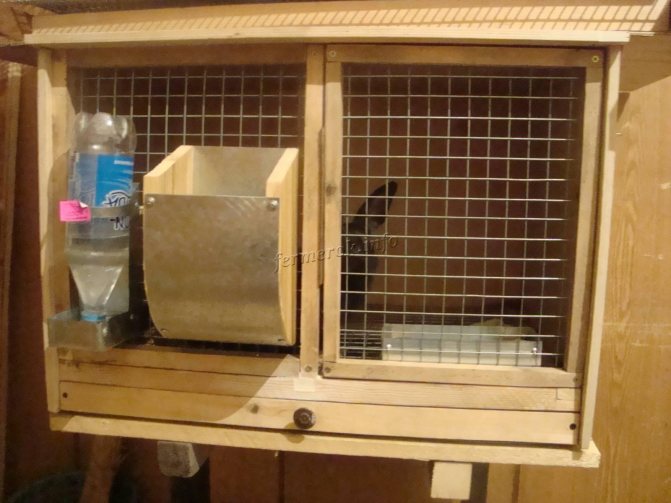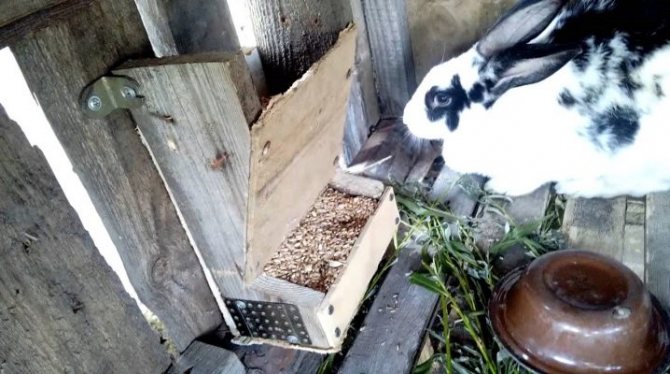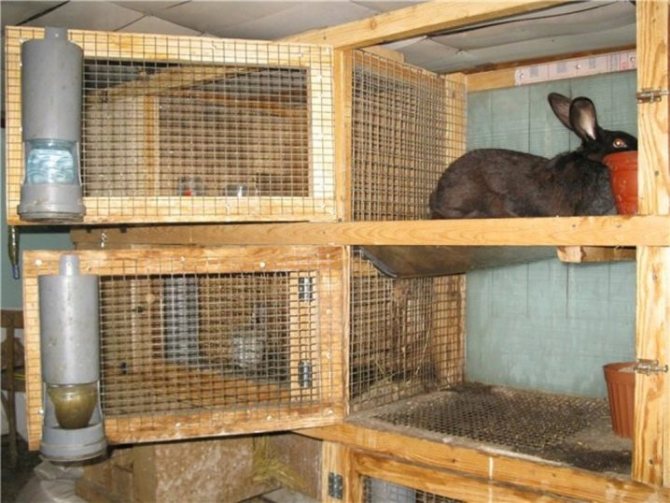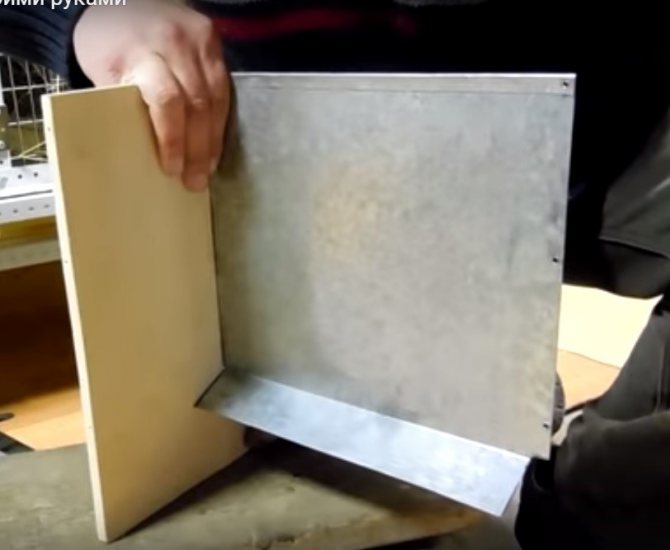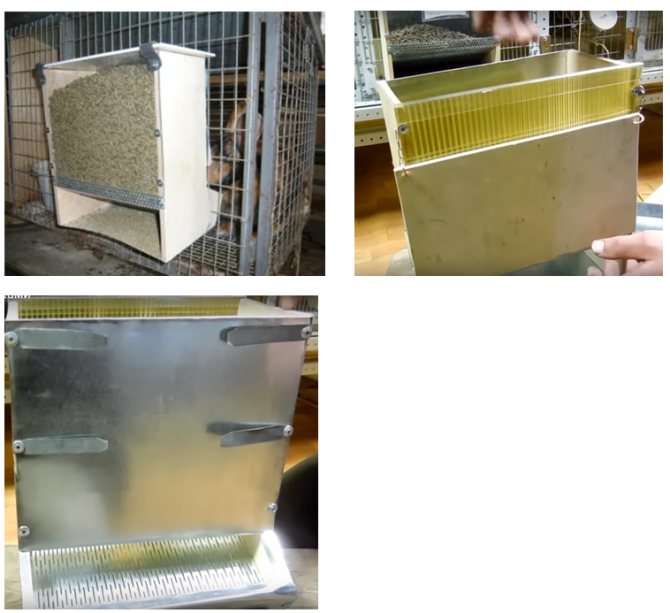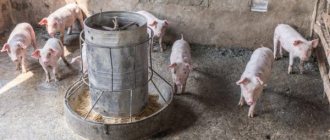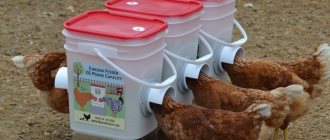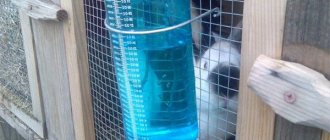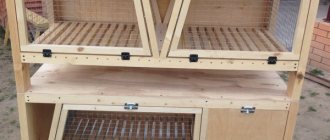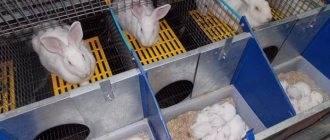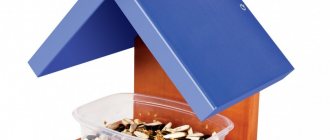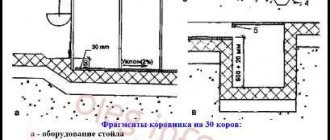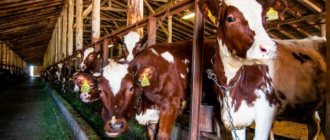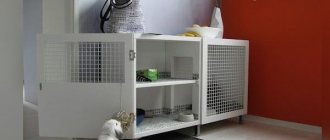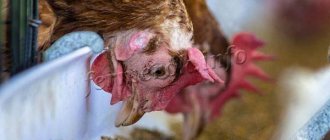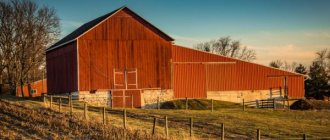Currently, the organization of home rabbit farms is gaining popularity. Relative ease of grooming makes rabbits attractive to novice farmers.
Rabbit meat is the most dietary meat, in addition, animals are valuable for light and warm rabbit fur. In the process of keeping rabbits, the most important condition is the correct and timely feeding of the animals. Fasting for more than one day can lead to the death of an individual.
Installing a feeder and drinker for rabbits in cages allows you to maintain hygiene standards and maintain cleanliness in the processes of feeding and drinking animals. In addition, feed consumption will be lower due to less loss of feed base during feeding. The animals will not have the opportunity to scatter and spoil the feed. You can purchase ready-made installations or make them yourself.
Thanks to the trough, feed consumption will be lower
Main types
The existence of several types of feeders is due to the diversity of the diet of rabbits. Each type of feed has its own type of feeder.
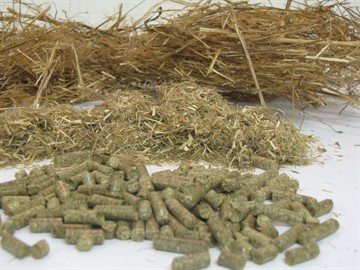
Rabbits are fed:
- hay;
- forbs, tops;
- root crops;
- grain mixtures;
- compound feed.
Feeding feed without a feeder, even if it is just hay, entails a number of undesirable consequences:
- overrun. Rabbits scatter food around the cage and trample it into the litter;
- violation of sanitary conditions. The food caught in the litter rots;
- harm to animals. Rabbits tend to defecate directly while eating. Eating contaminated feed leads to the development of infectious diseases.
For feeding animals, several types of devices are used: nursery, groove, bunker, in the form of cups.
Nursery
Used for feeding hay. A properly designed nursery can accommodate a 2-day ration of feed and provide rabbits with easy access to it, regardless of quantity, making life much easier for the owner.
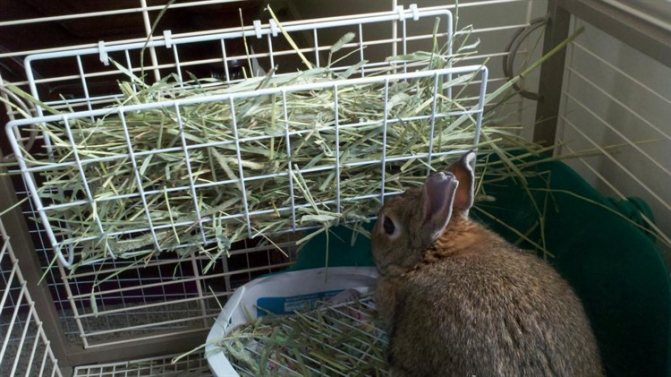

Nursery feeder for rabbits
Usually, a nursery is made of a net: through it, rabbits eat grass, but cannot get inside.
In the form of a gutter
The trough feeders are suitable for any type of feed and, with sufficient length, can saturate any number of fluffs. They are also used as drinkers. The trough does not have to be a semicircular trough. It can be a long box without a top and with a front wall slightly moved forward.
Bunker
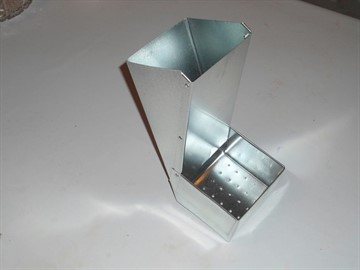

The most convenient type for feeding dry friable feed - grain or granular vitamin supplements. The advantage of such feeders over grooved and cup feeders is that they require refueling only once every 2-3 days.
The product consists of two parts:
- vertical tank with an opening at the bottom;
- a tray or chute connected to it from below.
Grain from the tank is poured into the tray until it is full: the spilled feed blocks the hole in the tank. As the rabbits consume feed, the hole opens and new portions are poured into the tray / chute. To feed a large number of rabbits, several bunker feeders are made and installed side by side.
In the form of cups
Ceramic or plastic bowl-shaped feeders are used for feeding root crops, bulk feed (grain, compound feed, etc.), as well as drinkers. Their advantage is their attractive appearance.
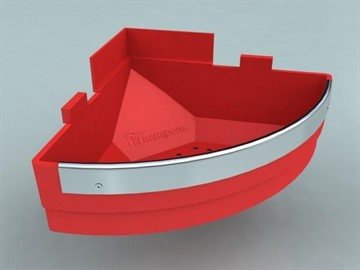

But the practicality of the feeders, as experience has shown, is a big question:
- small capacity: designed for a portion not exceeding the daily requirement;
- unstable: the rabbit easily overturns the cup and then tramples the food.
The rabbits' fixed pan is not upside-down but is awkward to fill. Another important drawback: the impossibility of self-production.
You have to buy cups, and the ceramic version with a volume of 250 ml costs 350-400 rubles. True, some rabbit breeders use large flat canned fish cans as bowl feeders.
By gravity into the tray
Do-it-yourself bunker feeder for rabbits is an excellent choice for your own household. It can consist of one large hopper, from where the feed goes to the tray. Or from several compartments - for a variety of rabbit meals.
If you decide to make such a "table", stock up on materials and tools.
You will definitely need a diagram, so a pencil, paper, scissors and a ruler or tape measure will come in handy. Depending on the material, you will need:
- drill or hammer;
- nails or screws;
- saw or hacksaw (scissors) for metal;
- rivets with a rivet or glue gun;
- hammer or mallet.
The bunker model consists of a box where food is placed, and a tray where it gradually descends. It is better to make the bunker tapering towards the bottom, and to equip the tray with a limiter.
Bunker feeders can be made of plastic, metal profiles or plywood. If you are making a non-metallic model, extend its life by covering the sides of the tray with metal.
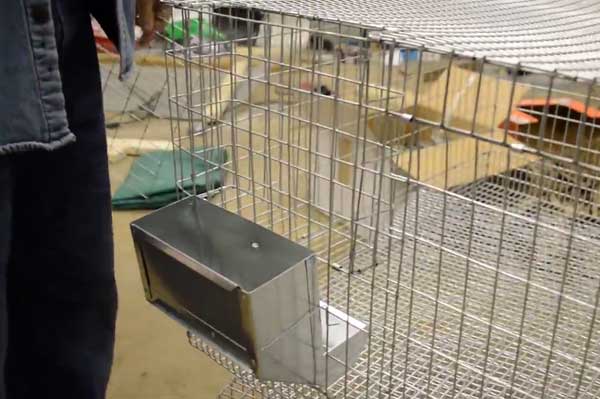

Construction rules
The right rabbit feeder has the following characteristics:
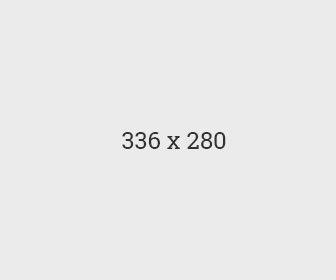

- convenient for filling feed and regular cleaning;
- optimal volume. A feeder with an underestimated capacity complicates the life of the owner (often you have to add a nutrient mixture) and leads to underfeeding of rabbits. Their appetite should not be underestimated: each day is applied to the feeder up to 30 times. The animals climb into an unnecessarily large container, scattering food and staining it with feces;
- holes are made in the bottom or it looks like a fine mesh. This measure prevents contamination of the feed;
- simultaneous access to food for all the inhabitants of the cage. With the limited size of the feeder, strong rabbits drive out the weak and they suffer from malnutrition. But when sizing, again, it is important to prevent the penetration of animals inside (see rule number 2);
- there are no sharp edges and stabbing elements that can injure animals;
- the material does not lend itself to the teeth of pets and does not harm them. Rabbits recklessly gnaw not only food, but also what should not be gnawed: parts of the cage (even a metal mesh), trays and, of course, a feeder.
It is worth talking about the materials for the feeders in detail.
Profile bunker
Using a metal profile or improvised means, you can make a bunker feeder for rabbits with your own hands. Drawings will help you not to be mistaken with dimensions. For work you will need: a marker with a tape measure, rivets with a drill, scissors for metal, a square and a metal profile 40x100 mm.
For example, consider step by step how a small rabbit feeder is made from a profile:
- study the diagram;
- mark the details directly on the profile;
- cut out structural elements;
- drill holes for fastening;
- assemble the parts of the feeder, giving them the desired shape;
- connect the elements with rivets;
- sand the edges with sandpaper, remove sharp corners, cutting edges;
- make attachments.
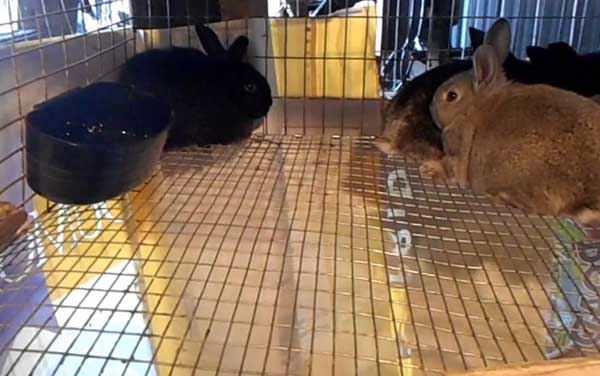

Fasteners are made from the feed side. The resulting structure should be easy to remove and hang comfortably.
In addition, a lid is sometimes attached on top to prevent debris or precipitation from getting inside.
What are the feeders made of?
The material for the feeder is usually:
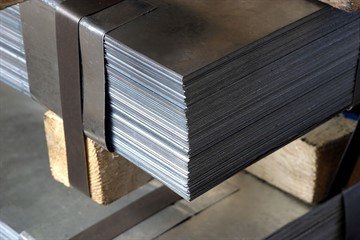

- tin;
- steel sheets;
- flat slate;
- wood or plywood;
- plastic.
Tinplate and steel sheets are preferred for the following reasons:
- metal feeder for rabbits too tough;
- easy to clean;
- durable;
- on the tin structure, the edges can be folded inward to prevent rabbits from scooping up the food.
Tin can be worked with simple tools, while steel sheets require a welding machine. True, the workpieces can also be fastened with rivets. Animals gnaw plastic and wood with pleasure, therefore, it is advisable to make feeders from such materials only if the most vulnerable places are upholstered with tin.
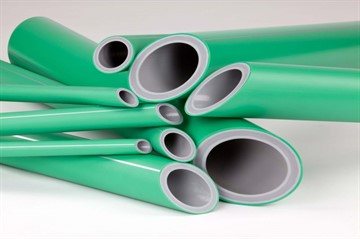

Without this, a thin plywood feeder will fall into a deplorable state in just a month. To prevent rabbits from encroaching on the feeder and other elements not intended for training teeth, branches are thrown to them as "nibbles".
It is convenient to use finished products to create a feeder. Most often, steel and plastic pipes are used: part of the wall is cut out, receiving a trough feeder.
Also, rabbit breeders actively use cans and cans. Nursery feeders are often made of metal mesh. The size of the cell is 25x50 mm: through it, the pets easily get hay.
According to some breeders, a mesh with a mesh of 25x25 mm is also suitable, but verification is required: you should personally make sure that the rabbits are free to extract hay, including with a small amount of it. Also, senniks are made in the form of a lattice from a steel bar.
Craftsmen adapt various products in the form of lattices for a nursery. For example, a cut-off bicycle rack is screwed to the wall.
Creche, grooved, for root crops
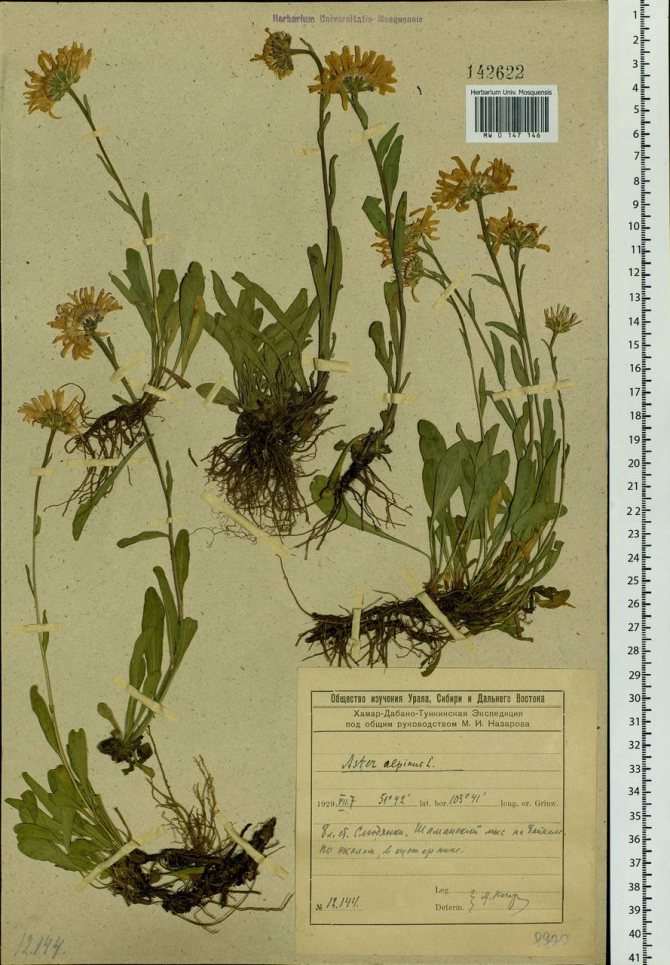

The diet of rabbits must include hay. Therefore, we need nursery feeders (senniki). It is recommended to provide for this even at the stage of cell manufacturing. Most often, such feeders are attached to the cage door so that they can be quickly cleaned. But this option is not entirely correct and even dangerous in the presence of young animals. Rabbits sneak into the nursery and may fall out of them. To avoid this, it is more rational to mount a feeder for small rabbits near the door, and not on it.
The grooved version of the rabbit profile feeder can be used for various types of feed: grain, root crops, grass. According to the farmers, such constructions are convenient to use, it is easy to fill up the feed in them.
If you need a container for root vegetables, cup-type designs are most suitable: bowls and bowls of various capacities and depths. They are usually not rigidly fixed so that they can be removed and cleaned. Of course, it should be borne in mind that they are impractical, and often animals turn over such bowls, scattering food around the cage.
Manufacturing instruction
It is useful for a novice rabbit breeder to familiarize yourself with several convenient homemade feeders of different types. The order of making each of them will also be considered.
Grooved plastic pipe
They act in the following sequence:
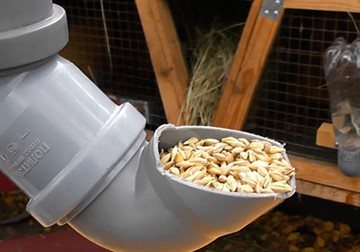

- from a plastic sewer pipe with a diameter of 110 mm or more, a fragment of 30 cm is cut off.
- along the segment, draw two parallel lines with a marker, spaced 13 cm from each other.
- exactly in the middle of the pipe segment between the two drawn lines, add two more perpendicular to them, 2 cm apart from each other.That is, each line is 1 cm from the transverse plane of symmetry.
- with a hacksaw, cut the pipe along the first two lines, starting from the end and ending with the transverse line closest to it. That is, the gap between the two transverse lines remains uncut.
- make cuts with a hacksaw along the transverse lines, as a result of which on both sides of them, a fragment of the pipe wall will be cut. You will get a gutter with a jumper in the middle, which does not allow the pipe to straighten.
- the cut fragments are heated with a building hair dryer (carefully) and straightened. Then, with metal scissors or a jigsaw, they cut out the plugs that overlap the gutter at the ends.
- glue the plugs into the groove on the sides, stepping back slightly from the edge. The distance is required to drill the mounting holes for mounting the gutter to a wall or cage door.
Check the feeder for sharp or jagged edges and other traumatic defects, if found, they are cleaned with fine sandpaper or a file.
Nursery
The procedure for making a simple nursery feeder looks like this:
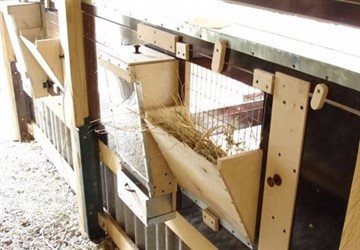

- two triangular blanks are cut from a sheet of plywood with a hacksaw or jigsaw - side walls;
- cut out a rectangular fragment - the back wall;
- a rectangle is cut from the metal mesh to create the front panel. You can make it differently: weld a lattice from vertical rods;
- connect all the elements into a single structure by means of self-tapping screws or nails.
In paired cages, it is convenient to use double-sided V-shaped nurseries, they do it like this:
- wooden bars are cut into blanks: 40 cm long - 4 pcs., 50 cm long - 3 pcs;
- knock together from blanks (can be connected with screws) two U-shaped structures: "legs" - from 40 cm of blanks, crossbar - from 50 cm. These are the frames of the walls of the feeder facing the rabbits;
- each U-shaped structure is sewn up with a rectangular piece of metal mesh of the appropriate size;
- both walls are attached to the last 50 cm long workpiece located at the bottom, so that in cross-section they form a similarity to the letter "V" with an angle of 45 degrees.
The length of the nursery is made from one wall of the cage to the opposite, so that they do not need sidewalls. In this case, the trough divides the dwelling into two parts, so that the cage turns out to be bifurcated.
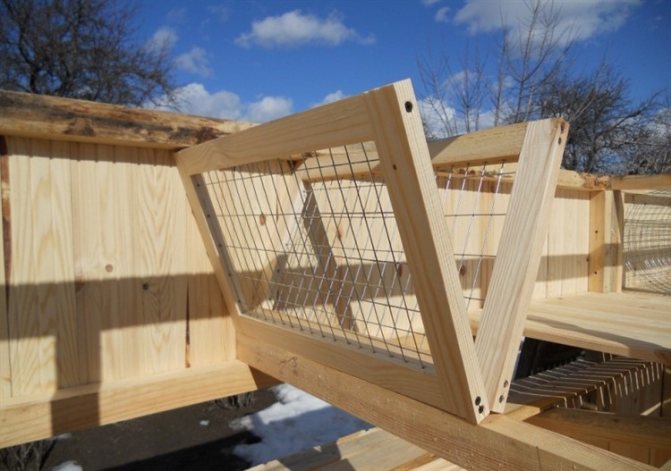

V-shaped nursery,
It is not recommended to mount the nursery feeder on the door, although this arrangement seems to be the most convenient for maintenance. Little rabbits squeeze into it through the net and when the breeder opens the door, they fall out. It is more correct to place the sennik at the door, but inside.
Due to the habit of rabbits to celebrate their natural needs during feeding, it is worth installing a feces tray under the nursery feeder fixed on the wall: there is a chance to accustom the animals to it and then it will be cleaner in the cage.
Bunker
A very simple hopper type feeder is made as follows:
- wash and dry an old tin can with a volume of 3 liters or more;
- stepping back 2.5-3 cm from the bottom, parallel to it on the bank, draw a line with a marker covering the product by about half;
- make a cut along the line;
- the jar is crumpled over the cut so that it becomes semicircular; at the same time, part of it is below the cut - it remains round, forms a kind of tray;
- many small holes are drilled in the bottom of the feeder.
The edges of the "tray" are folded, making them safe.
Bunker feeders made of plastic pipes are popular:
- two pieces are cut from a plastic sewer pipe: 70 cm and 30 cm long;
- a short piece on one side, 3 cm wide, is left intact. In the rest, a body element is cut out, turning the pipe into a gutter;
- the cut out fragment is heated with a building hair dryer and straightened. Then, with metal scissors, a plug is cut out of it, covering the end of the gutter;
- the feeder is assembled: a 90-degree bend is put on one end of a long fragment; on the other hand, a groove is connected to the branch with an uncut end.
The feeder is fastened with the long part (hopper) upwards, while the chute lies horizontally on the floor.The hopper can be pulled out through the roof, making refueling much easier. In this case, it is closed with a plug from above.
Double-sided nursery
This design has the additional function of a partition. To make it you will need:
- Wooden planks - 5 pcs.
- Grid.
- Nippers, hammer and nails.
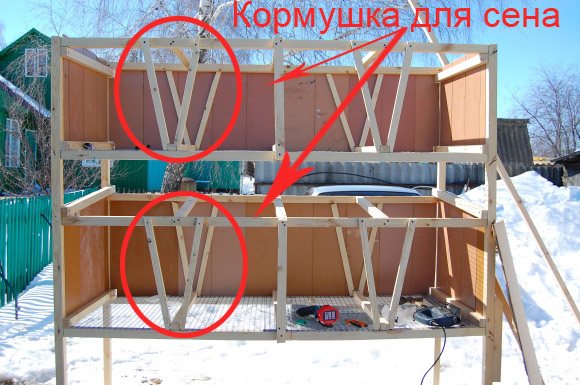

Operating procedure:
- The basis of the product is a wooden board 10-15 cm wide. 4 sides 40 cm long and 3 parts for the top and back wall 50 cm each are cut out of it.
- The mesh is cut into 2 rectangles measuring 40X30 cm.
- A piece in the shape of the letter "P" is made from the bars.
- Parts of the product are connected to each other.
- The second letter "P" is assembled and attached to the first at an angle of 45⁰.
- The walls are joined by a net, a front wall, a rear wall and side walls, a pallet and a stopper.
General requirements
Although a homemade rabbit feeder can be of different configurations, in general, the requirements for this device are the same. The container should be narrow so that small animals cannot climb inside and stomp on the food. At the same time, the size of the feeder cannot be very small - this way the food will run out quickly, and the rabbits will not get too full.
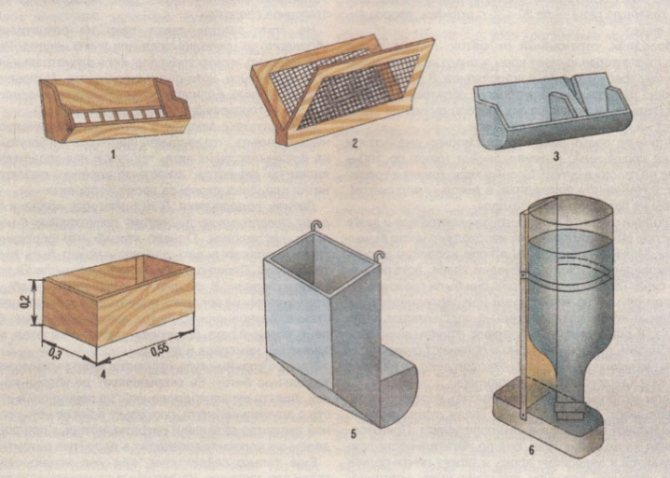

In addition, it is important that the size of the container is proportional to the size of the cage.
The operation of the structure should be convenient not only for the animals, but also for the person serving them. It is bad if removing, replenishing, cleaning and disinfecting causes any difficulties. The volume of the trough should be about a quarter larger than the volume of feed that is dispensed at a time. This will prevent the rabbits from scattering food. All parts of the device must be processed in such a way that so that they cannot somehow injure the animals - that is, remove the burrs and protect the sharp corners.
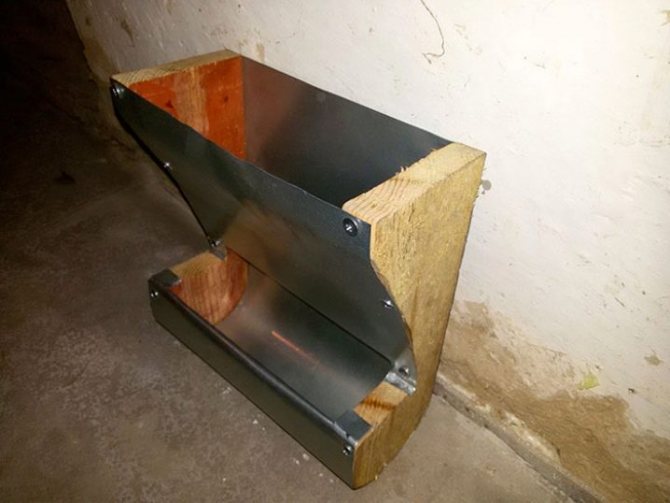

A good feeder is one in which the rabbit can stick its head, but where it cannot start its legs to spread food. Finally, it is important that the material is resistant - most likely, rodents will begin to chew and bite on a regular basis. For the same reason, the use of toxic materials is prohibited.
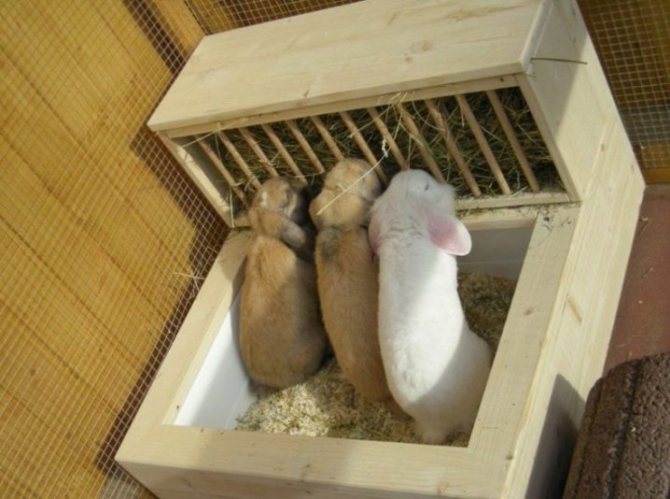

Variety of models
The type of rabbit feeder depends on the food that will be placed in it. For example, grass and roots, compound feed, grain or hay.
By design, they are divided into:
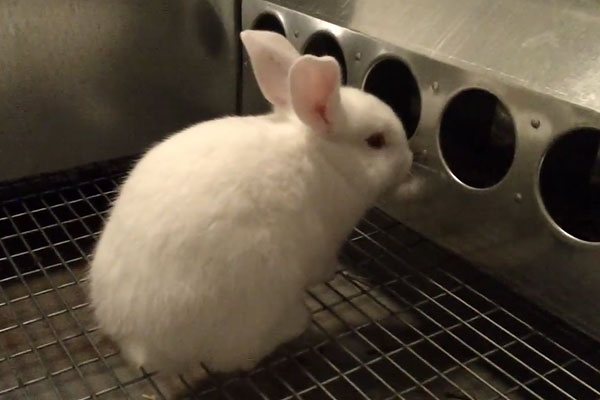

The first type is the simplest and cheapest. It can be made from plastic pipes by sawing a piece lengthwise and processing the edges. But in such models, it is difficult to dose food and not allow animals to contaminate it.
Rabbit hopper feeders are convenient and practical. They are suitable for almost any feed. It is fed by gravity, the size of the hopper allows you to fill it up for several days at once.
This automatic rabbit feeder allows you not to overfeed the animals. Grain comes in dosed as needed. The addition of feed can be done once every few days.
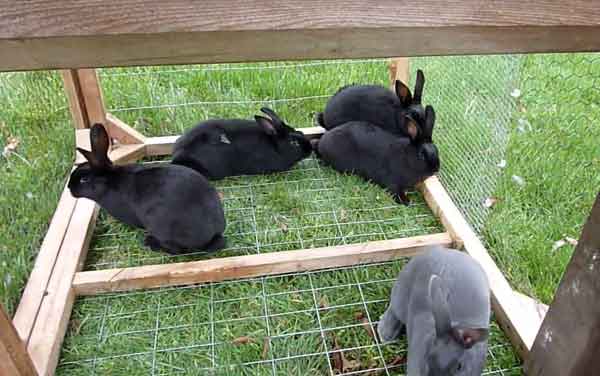

Hay feeders (nurseries) provide animals with access to hay or grass, but prevent them from scattering and contaminating food. They can be made double-sided, fastened between the cells.
Helpful hints
Thinking over the feeder and choosing a shape for it, it is important not to forget that the structure should be easy to clean. If it is not possible to clear corners or reach the back walls, the feed can start to rot and become a health hazard to the rabbit. The type of feeder is largely determined by what kind of feed it will contain. For example, it is more convenient to pour liquids into drinkers, put root crops in bulk containers, and place hay in nets.
When creating a feeder, a good solution would be add dividers to decorate additional compartments... For example, it can be drinking bowls with water, compartments for roughage. The "entrance" to the trough should be located at a height of 7 to 10 centimeters from the floor in the cage.
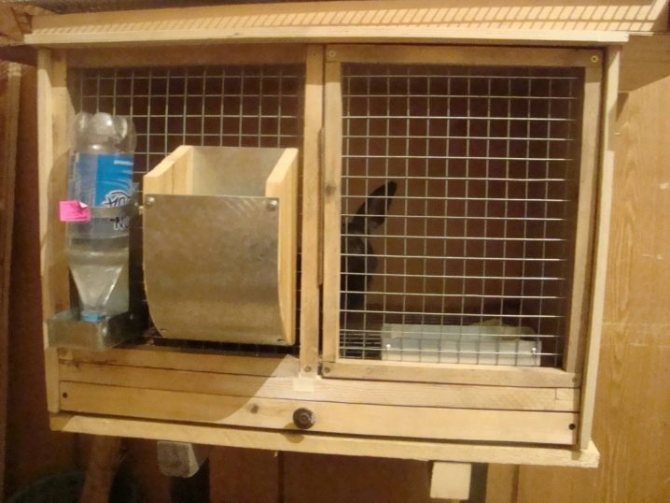

How to make a do-it-yourself rabbit feeder, see the video below.
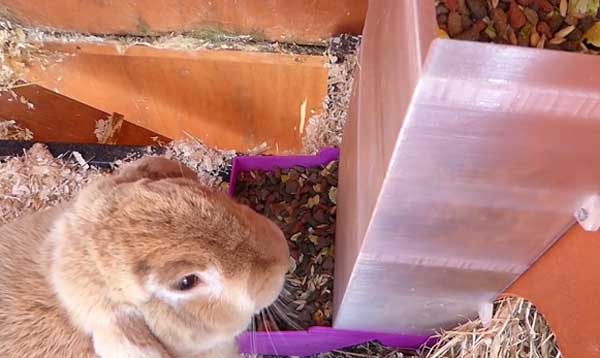

Store feed containers are good, but if you make do-it-yourself rabbit feeders, they will exactly meet your needs. And they will be cheaper. Read about the types, sizes, methods and materials from which they can be made in our article. The diet of animals should be varied, which means that adaptations of different types are needed. Automatic, hopper, chute, nursery - find all the details below.

